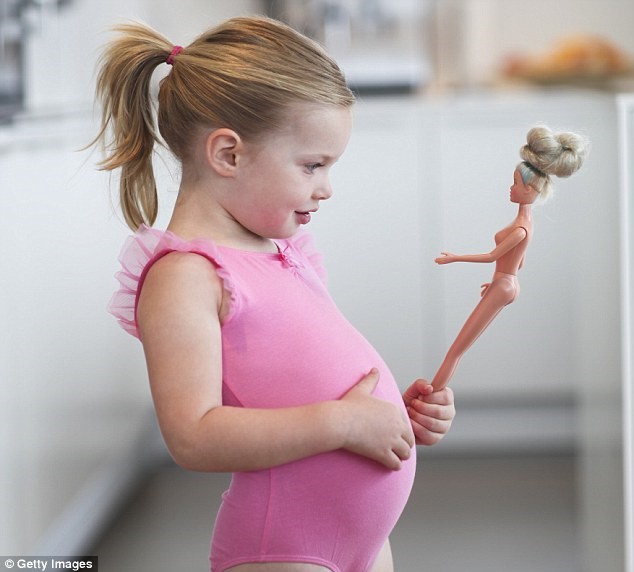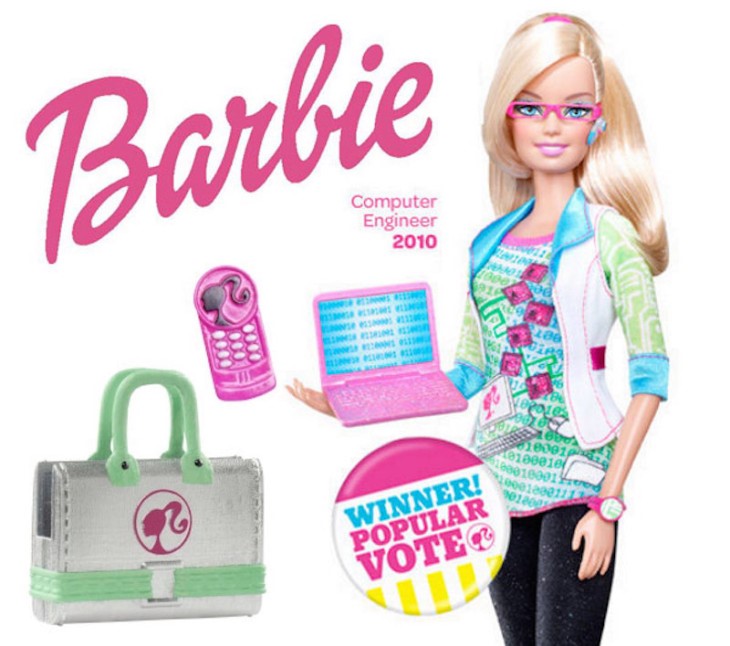Like many young girls, growing up I was a typical ‘Barbie Girl’ (it’s almost impossible not to sing the famous line by Aqua in my head when writing that!). I loved everything pink and I proudly owned an army of Barbies, as well as all necessary accompanying accessories such as: the Barbie Dream House, the Barbie horse and carriage, the Barbie Beach Hut – the list is endless.
To my surprise, I discovered that this year on 9th March, Barbie will be turning 60 years old, with a not a wrinkle in sight. She really does live up to the saying: “Life in plastic, it’s fantastic!”.


Ruth and Elliot Handler co-founded Mattel Creations in 1945 and 14 years later in 1959, Ruth Handler created the Barbie doll. However, it’s no surprise that more than one billion Barbie dolls have been sold since she made her debut at the American Toy Fair in New York on 9th March 1959. The Economic Times commented that despite fierce competition in the toy industry, 58 million Barbie’s are sold each year in more than 150 countries. In a growing generation of children’s obsession with iPads and tablets, Barbie has cemented herself as a staple toy for children and come a long way since her first model, pictured above.
Despite her years of success, Barbie has found herself under scrutiny for negatively influencing girls and portraying negative body expectations. Since her creation, it has been debated that Barbie is an unrealistic image of what the ‘average’ girl should look like, as well as failing to represent differences in race and colour. There is no need to question whether Barbie’s body shape is unrealistic. Researchers have reminded us that her proportions would occur in less than 1 in 100,000 adult women and that her waist is 20cm smaller than a reference group of anorexic patients. Most shocking of all, research also argues that if Barbie’s measurements resembled an actual woman, she would not be able to menstruate or even hold up her head.

Mattel claims that the proportions were created for ease of dressing and undressing the doll, not replicating an adult figure. However, there is no such rationale for the very thin representation of Barbie in her TV show, movies, books, and range of online games. In all forms, Barbie represents a completely unattainable figure for adult women; leading parent’s to debate Barbie’s credibility as a role model. Negative connotations of ‘blonde’, ‘bimbo’ and ‘air-head’ also are associated with Barbie. Teen Talk Barbie in 1992 said phrases such as “Math class is tough”, with many arguing that Barbie discouraging young girls from academic ventures.
Now ask yourself this: how can Barbie represent and be relatable to the twenty-first century girl? Since 2000, Mattel have worked to keep the Barbie brand as relevant as ever to represent woman and remain on-trend. Although the typical ‘Barbie’ style consisted of blonde hair, blue eyed dolls, the first black Barbie called Christie was created in 1969, with Mattel showing exclusivity and diversity. The Barbie franchise today represents more than 40 different nationalities.
One campaign in particular that stood out for me in the evolution of Barbie occurred back in 2010 with American PR agency Ketchum West and Mattel. Mattel, along with Ketchum West, harnessed Barbie’s brand power by having the public choose her 126th career, with her past occupations including president and princess. However, over a million people voted for Computer Engineer Barbie in a campaign mixing the public’s love for Barbie with the movement to empower girls. In an inspired touch, the Society of Women Engineers and National Academy of Engineering helped create the doll’s look.

Michelle Chidoni, VP of global brand communications at Mattel, said the company knew giving consumers a voice and delivering a doll they requested would drive earned media and create a conversation around the lack of women in STEM. “The conversation was extremely positive and underscored the brand’s purpose,” she noted. “When a girl plays with Barbie she imagines everything she can become.”
This campaign broke down the negative stereotypes associated with Barbie, emphasising that Barbie was more than just a fashion doll, but more so a positive role model for young girls. Blonde or brunette, slender or curvy, black or white, princess or president, Barbie is a forever favourite for young girls, and this campaign has helped influence future PR campaigns for Barbie. This includes the most recent campaign, Dream Gap, in 2018 which taught young girls to believe in themselves, and not to buy into sexist gender stereotypes. It also helped to influence the unique range of dolls made for Barbie during International Woman’s Day in 2018, with the release of 15 new dolls which are “role model” dolls crafted in the likeness of real iconic women across the globe, for example Nicola Adams OBE Box Champion from the UK.

With careers spanning from president to astronaut, Barbie can also add ‘Social Influencer’ to her long list of attributes. In the new era of social media, Barbie has remained on trend by having her voice established across a number of social platforms, allowing her to connect with her new digital fan base. The @BarbieStyle Instagram account has 1.5 million followers and looks more like an Instagram account for a celebrity than a doll. Through the success of this account, back in 2016 Barbie was photographed at an event for Dyson’s new supersonic hairdryer, and posted the picture to Instagram. This was the first sponsored post for Barbie, but with over 51,000 likes, it won’t be her last. This emphasises the dynamic nature of the Barbie brand, which refuses to be limited to the category of simply a toy.

Barbie also stays connected with fans through her own YouTube channel, with an impressive 5.5. million followers. Her channel includes a ‘vlog’ style series, which is designed to mimic some of our favourite YouTube stars, yet tailored to provide Ted Talk style videos to young girls regarding a number of issues such as: ‘Feeling blue? You’re not alone’ to the importance of having your voice heard.
Barbie has exceeded her previous stereotype, and has paved the way for a generation of new Barbie lovers; it really is no surprise that she’s remained a universal brand for the past six decades. With talks of a live-action Barbie film starring Margot Robbie, there really is no stopping the Barbie brand.
All that’s left to say is: Come on Barbie let’s go party – here’s to the next 60 years!
Abigail Foran is a final year BSc in Communications, Advertising and Marketing student at Ulster University. She can be found on Twitter: @abigailforan ; LinkedIn: https://www.linkedin.com/in/abigail-foran-755800118/
